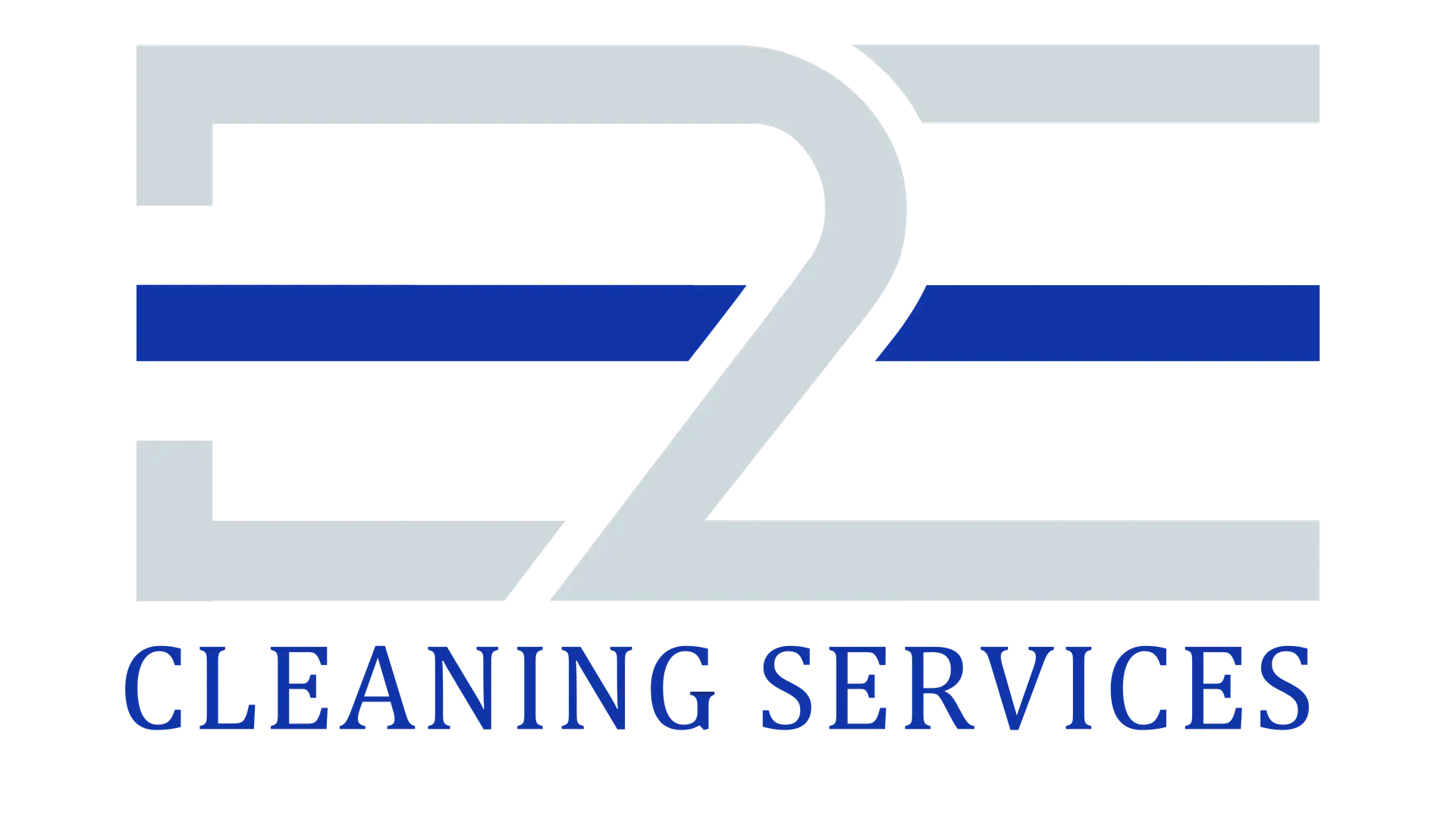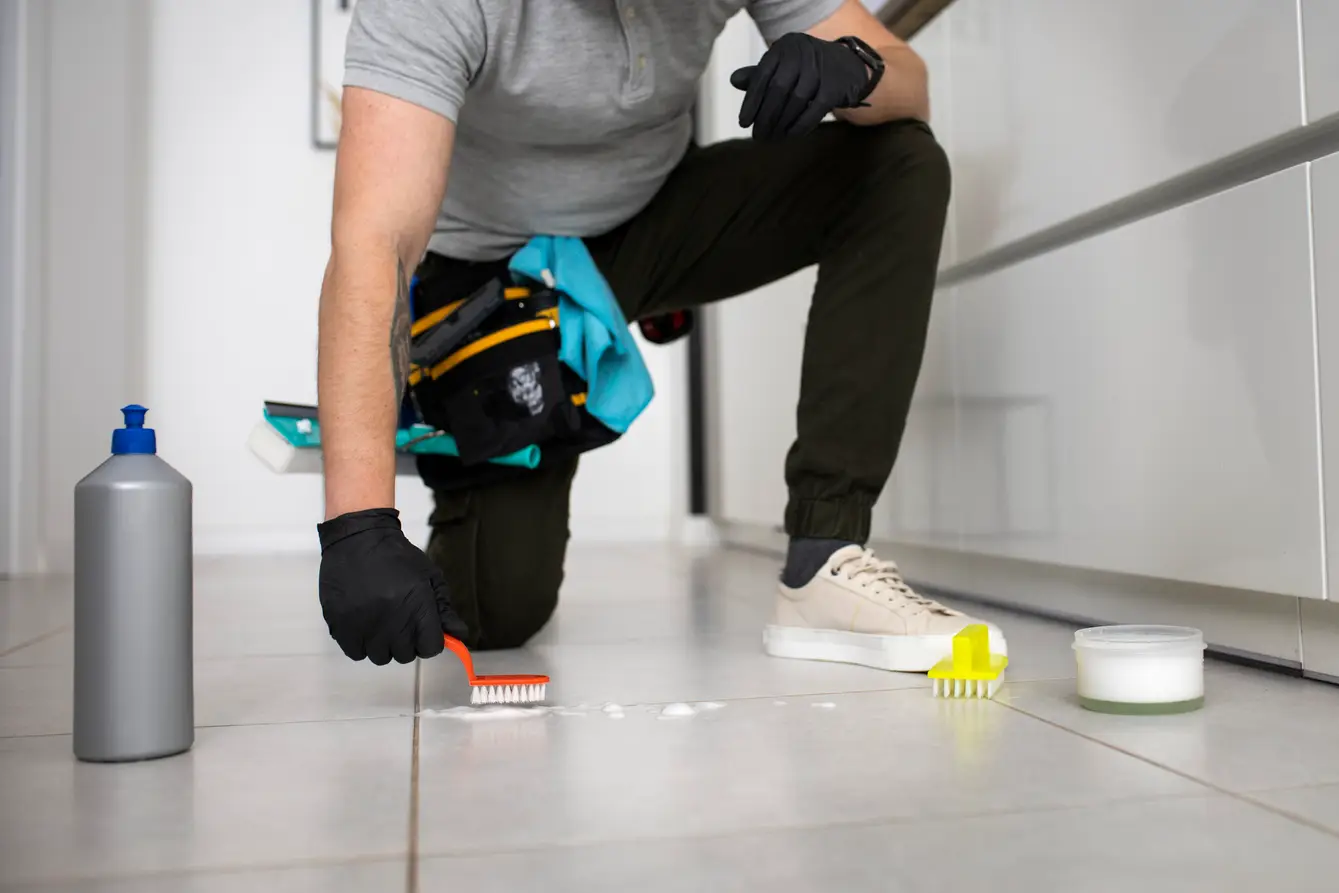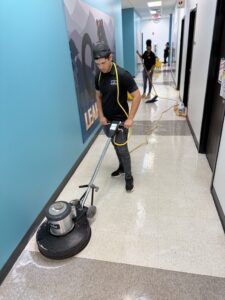Innovative tile cleaning technology allows transformation in the commercial cleaning industry. In this article, we will examine five impressive solutions changing industry convention by offering facility managers terrifically effective ways to maintain floors in high traffic commercial environments.
Such innovations include advanced extraction systems, AI powered scrubbers, and others that are resulting in better outcomes, reducing labor costs, improving sustainability traits and extending the life span of tile investments in shopping centers, commercial kitchens, public restrooms.
The Evolution of Commercial Tile Cleaning
Commercial tile surfaces present unique challenges for facility managers and cleaning professionals. High foot traffic in shopping centers, stubborn grease in commercial kitchens, and persistent moisture in public restrooms all contribute to accelerated deterioration of tile and grout. Traditional cleaning methods often fall short, leading to inconsistent results, excessive labor costs, and shortened floor lifespans.
Recent technological advancements have transformed the commercial cleaning landscape, addressing these longstanding challenges. These innovations aren’t merely incremental improvements, they represent paradigm shifts in how we approach deep cleaning, restoration, and maintenance of commercial tile surfaces.
“The commercial cleaning industry has historically been slow to innovate, but that’s changing rapidly,” notes industry expert Michael Brendan of the Commercial Cleaning Technology Institute.
We’re seeing more technological advancement in the past five years than in the previous twenty, particularly in tile maintenance.
Let’s explore the five most impactful innovations changing the game for facility managers, property management companies, and cleaning service providers across commercial environments.
Innovation #1: Advanced Extraction Technology
For many years the deep cleaning of tiles and grout has been carried out by traditional methods, but more recently methods have changed and even reached unprecedented levels of effectiveness in commercial environments.
How It Works
These modern extraction systems use precise high pressure delivery systems (normally 800-1200 PSI) in conjunction with the power recovery units that form a closed cleaning loop.
The technology sprays heated cleaning solutions at the right angles into tile surfaces and grout lines to dissolve embedded soils, and then immediately removes the contaminated solution.
The difference between today’s extraction technology and the previous technology is that it includes precision computer controls that adjust pressure, temperature and solution concentration according to soil levels and surface types. They are able to identify between ceramic, porcelain and natural stone surfaces, and change cleaning parameters automatically for the best outcome without harming grout or tile.
‘The precision of modern extraction technology allows us to address different levels of soil across a shopping centre floor without over wetting or under cleaning any part,’ explains Clean Tech Solutions Operations Director, Jamie Ortiz. “Five years ago, this level of control was not possible.”
Commercial Benefits
Especially in shopping centers and retail environments, these systems have been very useful in decreasing the cleaning time for 35% and making the results more uniform over a large floor area. Removing tracked in soils and spills, the technology excels at doing so without leaving behind the residue that can accelerate resoiling.
Advanced extraction technology is applied to the persistent problem of organic contamination in grout lines in bathroom environments. High temperature (typically 180 – 210 F) and controlled pressure together sanitize porous grout surfaces reducing the bacterial loads much more than conventional mopping systems.
Major retail chains report significant time extension between deep clean cycles, frequently bringing restoration intervals from a quarterly to semi-annual interval after installing these systems—truly a wise financial move in maintaining excellent appearance levels.
Innovation #2: Nano-Coating Sealants
Commercial tile grout is a traditional weak point with grout sealers, which degrade rapidly in a high traffic or wet environments. Nano technology is a quantum of progress in protection capability.
The Science Behind Nano-Protection
Unlike other polymer sealants that create a film on the surface, nano coating sealants trickle down into the tile and grout at the molecular level, bonding to the substrate covalently. The particles used in these coatings are 5 to 10 nanometers in size and create a hydrophobic barrier that does not alter the appearance or slip resistance of commercial tile surfaces.
These coatings have a molecular structure with both hydrophobic and oleophobic properties, which means they repel water and oil-based contaminants, a critical function in commercial kitchens where grease and water constantly wreak havoc with floor maintenance systems.
For Dr. Rachel Chen, materials scientist specialising in the commercial surface technologies, “Nano-coatings are revolutionary because they supply protection while maintaining breathability.” “Vapor transmission is allowed by the microscopic particles, but liquids are blocked, preventing the trapped moisture problems that plagued earlier sealer technologies.”
Application and Longevity
Specifically, application protocols have been engineered for large commercial environments for these sealants. Low VOC formulations meet stringent indoor air quality requirements for occupied commercial spaces, and application can be made without facility shutdown in most cases.
The durability profile of the nano coatings exceeds 10 to 100 times that of conventional sealants, especially in harsh conditions.
- Shopping center main corridors: 18-24 months between reapplications (vs. 4-6 months for conventional sealers.
- Commercial restrooms: 12-16 months protection even with daily disinfection protocols
- Kitchen service areas: 9-12 months of effectiveness despite continuous grease exposure and aggressive cleaning chemicals
This translates directly to less facility maintenance costs and higher appearance levels between deep cleaning interventions. The extended maintenance cycle is a big operational efficiency for property management companies managing multiple locations.
Innovation #3: Electrostatic Cleaning Systems
Electrostatic was originally popularized during the pandemic for its ability to spray a dilute cleaning solution on vertical, horizontal and even irregular surfaces.
Breaking Down the Technology
As they exit the sprayer, the cleaning solutions charge the electrostatic systems which charge the positively charged particles and cling to the negatively charged surface. This gives 360 degree coverage best suited for textured tiles and tight grout lines where traditional processes cannot be done.
“The wraparound effect of electrostatic applications is game-changing for complex tile surfaces,” notes Sofia Hernandez, Executive Housekeeper at a major hotel chain. “We’re seeing complete coverage in textured kitchen floors where conventional methods left significant gaps in application.”
Effectiveness in Food Service Environments
Electrostatic systems outperform conventional cleaning in kitchen and restroom settings by:
- penetrating porous grout and textured tiles more effectively.
- Saves up to 70% of solution waste.
- Consistency chemical coverage to obtain better results
- Cutting application time—vital in fast-paced environments
In commercial kitchens, there has been a 93% reduction in grease build-up compared to spray and mop techniques, as well as improved bathroom conditions.
Electrostatic cleaning fills a gap between daily maintenance and scrubbing for large venues such as food courts or arenas, where it can extend the life of surfaces and reduce the risk of slipping.
Prevent slip hazards in wet environments – Click to improve your facility safety
Innovation #4: Sustainable Enzymatic Cleaners
After a long reliance on harsh chemicals, the commercial cleaning industry is now turning to enzyme-based solutions that promise good odour control, environmental friendliness and targeted cleaning.
How Enzymes Target Specific Soils
Biological catalysts known as enzymes are used in enzymatic cleaners to break down a certain type of organic soil, which represent a smarter, surface-safe alternative than caustic chemicals.
- Proteases are used to remove protein soils in bathrooms
- Lipases break down kitchen grease and oils
- Amylases are used to remove starch from food service floors
- Cellulases are used to break down plant and paper debris in public areas.
Unlike normal cleaners that just work momentarily and essentially dry into filth, enzymes continue working for approximately 4 – 6 hours after application, excellent for heavy ‘grout cleaning’ but without abrasive scrubbing.
Environmental consultant Marcus Johnson says: “Enzyme cleaners allow us to use precision instead of force.” “The formulas address a particular problem without compromising surfaces or indoor air.”
Environmental Benefits and Performance
Facilities following green cleaning standards are an ideal fit for enzymatic systems.
Their benefits include:
- Biodegradable ingredients with low aquatic toxicity
- Support for indoor air quality with minimal VOC emissions
- Longer active cleaning cycles reduce water use
- Ongoing soil breakdown means fewer restorative deep cleans
In a 12 month, multiple shopping center, enzyme cleaning protocols reduced water use by 34% and extended the restorative cleaning time by 40%.
In commercial kitchens, grease depositing grout and textured, safety tiles make traditional methods a lost cause, and specialized enzyme blends prove that enzymes are not only safer but stronger as well.
Innovation #5: Automated Robotic Scrubbers
Commercial tile maintenance is rapidly evolving to include autonomous robotic scrubbers and is moving from a novelty to a necessity in large scale environments.
AI and Machine Learning Applications
Today’s robots offer the advanced technologies that able to clean up to 20,000 square feet per hour while business is going on.
- Real time facility models are created by the LIDAR mapping.
- Adapts cleaning paths for traffic as well as soil patterns
- Safe navigation around people and obstacle is ensured by sensor arrays
- Real time monitoring is possible with cloud connectivity
UV-C disinfection is now available in many units, making them dual purpose hygiene and presentation tools.
Automation expert David Park says that a true change is flexibility. “Their software learns and improves with every pass – no more rigid programming.”
Integration with Existing Maintenance Programs
Instead of replacing human teams, robotic scrubbers improve the efficiency of the workflows.
- Staff are freed for detailed tasks by scheduling operation during business hours
- The cleaning trend and foot traffic insights can be achieved from performance data
- Management of multiple properties is made centralized
- This reduces dependency on the availability of staff to get consistent results.
The autonomous ones are used to maintain the main corridors of shopping centres, together with crews for high-touch zones. Robots maintain a clean appearance without disturbing customers during peak hours.
Robotic systems provide commercial managers with the transparency and predictability of detailed reporting to validate cleaning effectiveness and support customer communication.
The most advanced models dynamically allocate labour to routes and change routes as required as usage evolves.
Conclusion: Implementation and ROI Considerations
However, to drive significant improvements in tile and grout maintenance, these five innovations should be adopted, implemented and ROI analysed.
Return on Investment Analysis
Although these upfront costs are higher, the returns include:
- Labor savings through automation
- Longer intervals between deep cleans
- Lower liability from cleaner, safer floors
- Extended flooring life
- Reduced water and chemical use
ROI for most technologies is 12–24 months, robotics may take 18–36 months, but provide the highest long term savings.
Implementation Strategies
- Audit current maintenance gaps
- Pilot technologies in high-priority zones
- Train staff and update SOPs
- Scale proven approaches and develop them on a responsibility basis
- Standardize across properties for efficiency
Future Trends
Emerging trends include:
- IoT-connected cleaning systems
- Predictive maintenance tech Greener, high-performance solutions
- Integration with facility management platforms
These innovations aren’t upgrades, these are the way of smarter, safer and better floor care.






